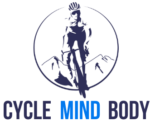Your heart rate isn’t just a number—it’s your body’s way of telling you how hard you’re working during rides.
Monitoring your average heart rate can help you ride smarter and safer, optimizing your training and improving your performance.
In this post, we’ll delve into the importance of a good average heart rate while cycling and explore practical tips to maximize your performance on the road.
What is Average Heart Rate and Why Does It Matter?
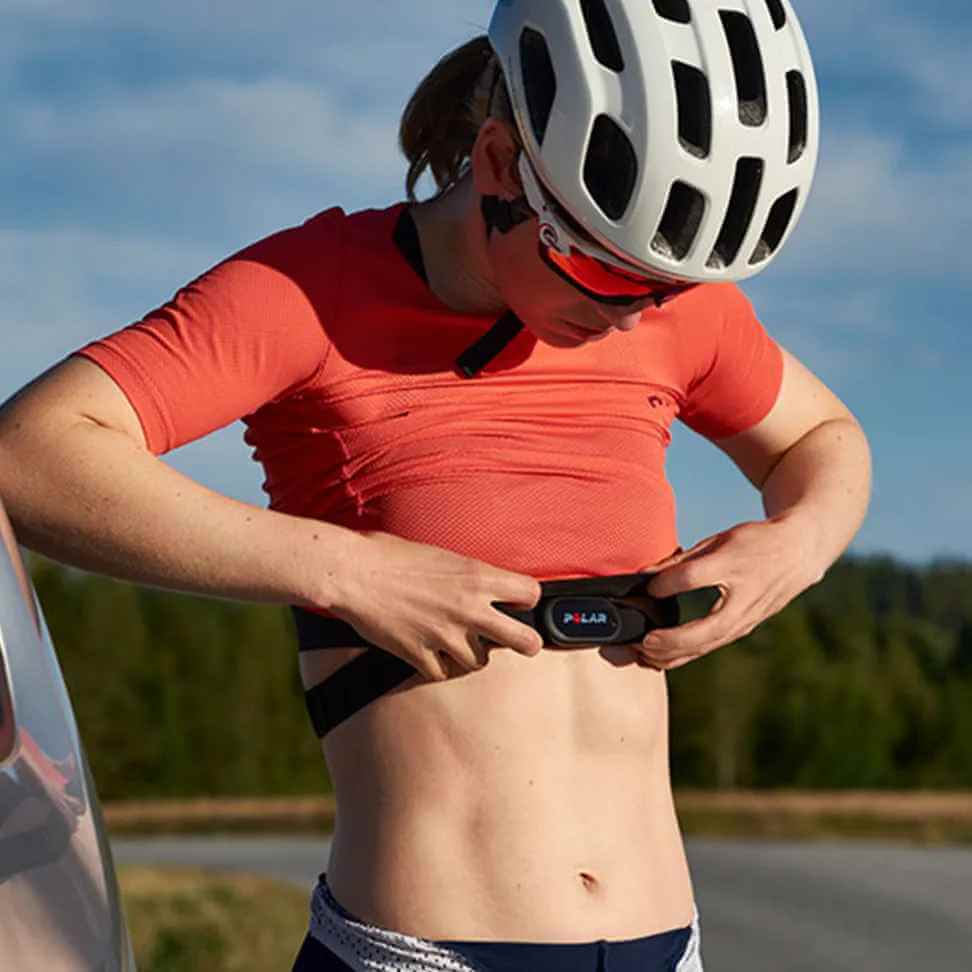
Average heart rate, simply put, is the number of times your heart beats per minute over a specified period, typically during exercise. It’s a vital metric for assessing cardiovascular fitness and exertion levels while cycling.
By monitoring your average heart rate, you can gauge the intensity of your workouts, track improvements in fitness over time, and ensure you’re training within safe and effective limits.
But why does average heart rate matter? In cycling, as in any form of exercise, understanding your heart rate can help you optimize your training and achieve your fitness goals.
If your average heart rate is consistently too high during easy rides, it could be a sign that you’re pushing yourself too hard and need to dial back the intensity. On the other hand, if your average heart rate is too low during hard efforts, you may not be pushing yourself hard enough to see improvements in fitness.
During a typical 2-3 hour cycle, average heart rates can vary widely depending on factors such as terrain, weather, and individual fitness levels.
For example, an average heart rate of 120-140 beats per minute might be typical for a leisurely ride, while a more intense ride could see average heart rates in the range of 150-170 beats per minute.
However, it’s important to note that simply trying to achieve a higher average heart rate is not always the most effective way to get fitter. Instead, focusing on the quality and consistency of your workouts is key.
It’s also worth mentioning that relying solely on average heart rate data can have its limitations. Factors such as fluctuations in terrain, traffic, and even emotional state can influence heart rate variability during a ride.
Therefore, it’s essential to consider other metrics such as perceived exertion and overall performance when evaluating the effectiveness of your training sessions.
How to Measure Heart Rate While Cycling
Measuring your heart rate while cycling is easier than you might think. There are various methods available, from traditional chest straps to advanced wrist-based monitors and even smartphone apps.
Chest straps are a popular choice for their accuracy, while wrist-based monitors offer convenience and ease of use. Choose a method that works best for you and ensures consistent and reliable readings throughout your rides.
When it comes to measuring heart rate while cycling, accuracy is key. Chest straps, which detect electrical signals from the heart, are generally considered the most accurate option.
Wrist-based monitors, which use optical sensors to detect blood flow, are more comfortable but may not be as accurate, especially during intense exercise or in cold weather.
Some cyclists also use smartphone apps with built-in heart rate monitors, but these may not be as reliable as dedicated devices.
Factors Affecting Heart Rate
Your average heart rate while cycling can be influenced by a variety of factors beyond just physical exertion. Age, fitness level, hydration, and environmental conditions such as temperature and altitude all play a role in determining your heart rate variability.
Understanding these factors can help you interpret your heart rate data more accurately and make necessary adjustments to your training regimen.
Age is one of the most significant factors affecting heart rate. As we age, our maximum heart rate tends to decrease, meaning that older cyclists may have lower average heart rates compared to younger cyclists at the same level of effort.
Fitness level also plays a crucial role, with fitter cyclists typically having lower average heart rates at a given intensity.
Hydration and environmental conditions can also impact heart rate, with dehydration, heat, and altitude all causing the heart to work harder to maintain blood flow.
What is a “Good” Average Heart Rate for Cyclists?
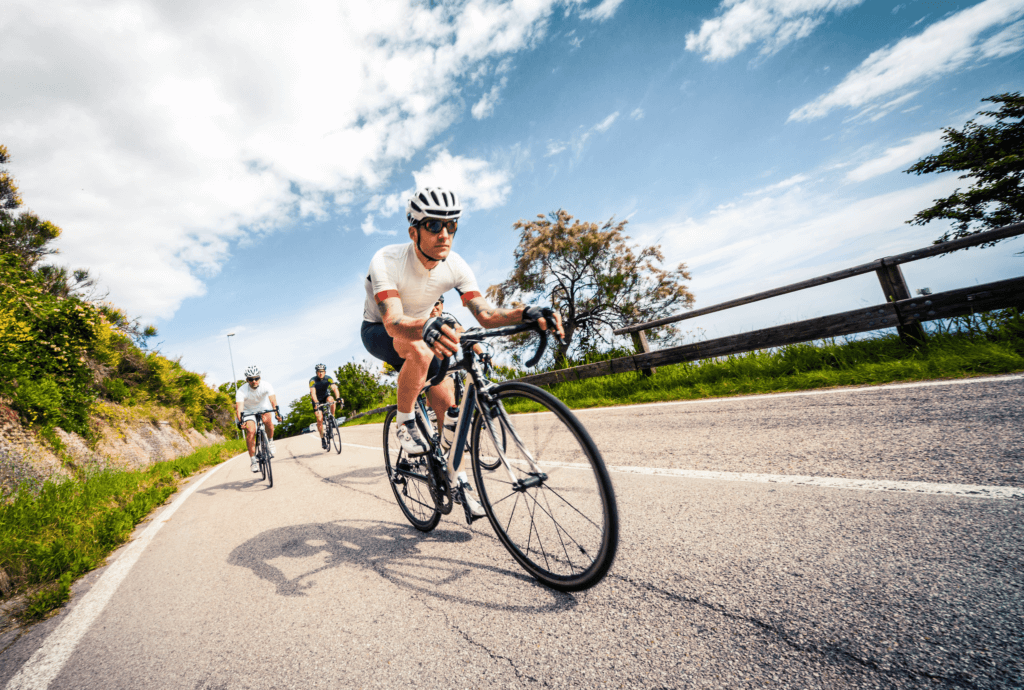
There’s no one-size-fits-all answer to what constitutes a “good” average heart rate while cycling. It varies greatly depending on individual factors such as age, fitness level, and training goals.
What’s more important is understanding your own baseline and monitoring changes over time. By tracking your average heart rate consistently, you can identify trends, set realistic targets, and measure progress towards your cycling objectives.
For example, let’s consider the case of a 30-year-old male cyclist who is relatively fit and engages in regular cycling training. With a maximum heart rate of 190 beats per minute (bpm), a “good” average heart rate for him during a moderate-intensity ride might fall between 130-150 bpm, which corresponds to his Zone 2 heart rate. This range reflects his cardiovascular fitness level and allows him to maintain a challenging yet sustainable pace throughout the ride.
On the other hand, a 50-year-old female cyclist who is new to cycling and has a lower level of fitness may have a different target range for her average heart rate. With a maximum heart rate of 170 bpm, for example, a “good” average heart rate during a similar moderate-intensity ride might be between 110-130 bpm, corresponding to her Zone 2 heart rate. This range takes into account her age and fitness level, allowing her to build endurance and gradually improve her cardiovascular health over time.
It’s essential to remember that average heart rate is a highly individualized metric, and what may be considered “good” for one person may not necessarily apply to another.
Factors such as genetics, training history, and even environmental conditions can all influence average heart rate variability. The key is to focus on your own progress and listen to your body’s signals during each ride.
By regularly monitoring your average heart rate and paying attention to how it responds to different levels of effort, you can gain valuable insights into your cardiovascular fitness and make informed decisions about your training and performance goals.
Whether you’re aiming to improve endurance, increase speed, or simply enjoy the ride, understanding and optimizing your average heart rate can help you achieve success in your cycling endeavors.
For endurance cyclists, maintaining a steady but sustainable average heart rate over long distances is key. On the other hand, competitive cyclists may aim for higher average heart rates during interval training sessions to improve speed and power.
Whatever your goals may be, understanding how to interpret and utilize your average heart rate data can help you optimize your training and achieve better results on the road.
Factors Influencing Average Heart Rate
Terrain and Riding Conditions: Average heart rate can fluctuate significantly depending on the terrain and riding conditions. Uphill climbs, headwinds, and rough terrain typically result in higher average heart rates due to increased physical exertion.
Conversely, downhill descents and flat roads may lead to lower average heart rates as the body requires less effort to maintain speed. It’s essential to take these factors into account when analyzing your heart rate data and adjusting your pacing strategy accordingly.
Training Intensity and Recovery: Balancing high-intensity intervals with adequate recovery periods is crucial for optimizing average heart rate during training. Pushing yourself too hard without sufficient rest can lead to elevated heart rates and increased risk of overtraining and injury.
Incorporating recovery rides and rest days into your training schedule allows your body to recover and adapt, ultimately improving your average heart rate efficiency over time.
Defining Training Zones and Their Purpose
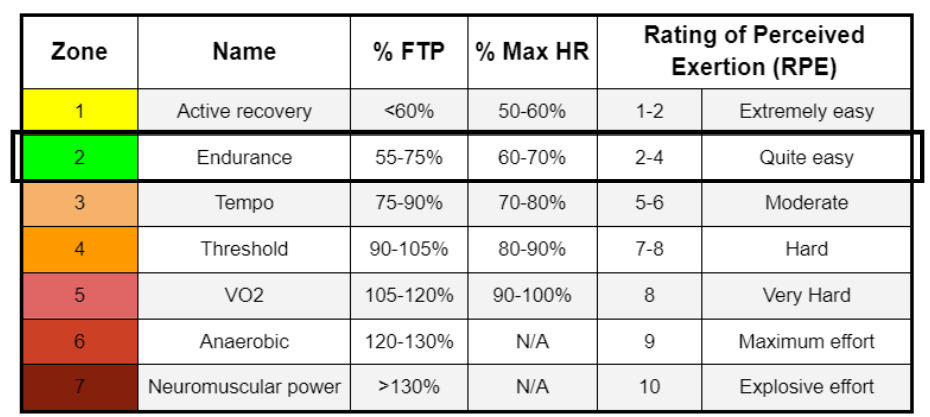
Training zones categorize different levels of heart rate intensity, helping cyclists tailor their workouts to achieve specific fitness goals. These zones are essential for optimizing performance and ensuring efficient progress in cycling training.
Zone 1: Recovery Zone
Zone 1 is the lowest intensity training zone, typically ranging from 50% to 60% of your maximum heart rate. This zone is ideal for recovery rides, allowing cyclists to maintain a steady pace while promoting active recovery and enhancing circulation.
Recovery rides in Zone 1 help reduce muscle soreness, improve overall recovery between intense workouts, and enhance aerobic endurance over time.
Zone 2: Endurance Zone
Zone 2, also known as the endurance zone, encompasses a slightly higher intensity level, typically between 60% to 70% of your maximum heart rate. This zone is where most of your cycling should take place, and ideally, you should aim to keep your average heart rate in this zone.
Endurance rides in Zone 2 build aerobic endurance, improve cardiovascular fitness, and lay the foundation for more intense training sessions. Maintaining a steady effort in Zone 2 allows cyclists to develop efficient aerobic energy production and enhance their ability to sustain prolonged efforts.
Zone 3: Tempo Zone
Zone 3 represents the tempo zone, ranging from 70% to 80% of your maximum heart rate. Tempo rides in this zone are characterized by a comfortably challenging pace, where cyclists can sustainably push themselves for extended periods.
Training in Zone 3 improves lactate threshold, enhances aerobic capacity, and increases overall speed and endurance. Tempo efforts are particularly beneficial for cyclists preparing for endurance events or races.
Zone 4: Threshold Zone
Zone 4, also known as the threshold zone, lies between 80% to 90% of your maximum heart rate. Training in this zone is highly demanding and focuses on pushing the limits of lactate threshold.
Threshold efforts improve the body’s ability to buffer lactate buildup, delay fatigue, and sustain high-intensity efforts for longer durations. Workouts in Zone 4 are crucial for improving race performance, increasing anaerobic capacity, and building mental toughness.
Zone 5-7: Anaerobic Zone
Zones 5-7 represents the highest intensity level, ranging from 90% to 100% of your maximum heart rate. This zone is reserved for maximal efforts and high-intensity intervals aimed at improving anaerobic capacity and power output.
Training in Zones 5-7 enhances sprinting ability, increases muscular strength, and stimulates physiological adaptations for peak performance. While workouts in Zones 5-7 are brief and intense, they play a vital role in overall fitness and race readiness.
Understanding and effectively utilizing training zones allow cyclists to tailor their workouts to achieve specific training objectives and maximize performance gains. By incorporating a variety of intensities into their training regimen, cyclists can build a well-rounded fitness profile, improve endurance, and reach their cycling goals with confidence.
Finding Your Maximum Heart Rate
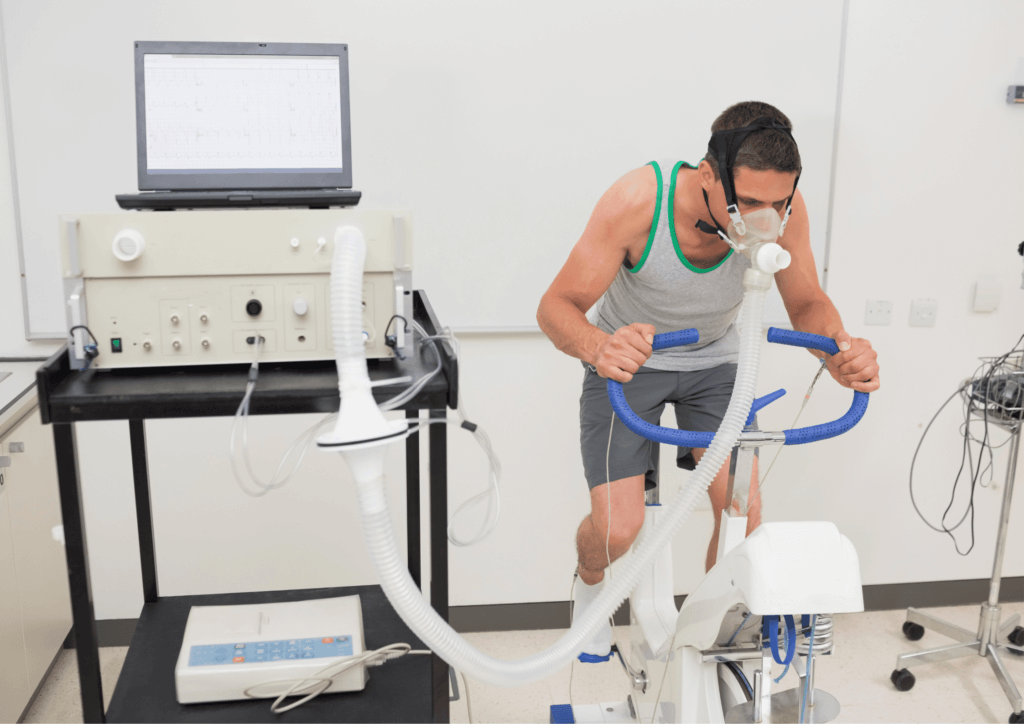
Determining your maximum heart rate is crucial for accurately defining your training zones and optimizing your cycling performance. Here are several methods cyclists can use to find their maximum heart rate:
220 Minus Your Age Formula: This traditional formula estimates maximum heart rate by subtracting your age from 220. While it provides a quick and straightforward estimate, it may not account for individual variations in fitness levels and genetic factors. To use this method, simply subtract your age from 220 to get an estimate of your maximum heart rate.
Indoor Trainer Ramp Test: An indoor trainer ramp test involves gradually increasing the intensity of your cycling effort until you reach exhaustion. Start with a warm-up at a low intensity, then gradually increase the resistance or power output every few minutes until you can no longer maintain the pace. Your maximum heart rate is typically reached during the final stages of the test when you’re exerting maximum effort.
Indoor/Outdoor Max Time Trial-Sprint Test: This test involves performing a maximum effort time trial or sprint either indoors on a stationary bike or outdoors on your regular cycling route. Warm up thoroughly, then push yourself to the limit for a set distance or time. Your maximum heart rate is likely to occur during the peak effort phase of the test.
Heart Rate Monitor Data Analysis: Another method is to analyze your heart rate data from intense cycling efforts, such as interval training sessions or races. Look for the highest heart rate recorded during these efforts, as it likely represents your maximum heart rate. Be cautious when using this method, as it may not always capture your true maximum heart rate if you haven’t pushed yourself to your absolute limit.
Regardless of the method you choose, it’s essential to listen to your body and prioritize safety during any maximum heart rate testing. Make sure you’re well-rested and fueled up before the test, and be prepared to dig deep – it’s going to hurt.
Once you have determined your maximum heart rate, you can use it to establish your training zones and tailor your workouts to achieve specific fitness goals effectively.
